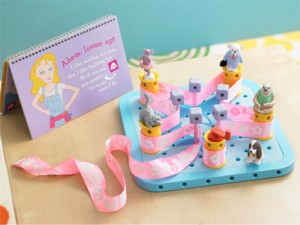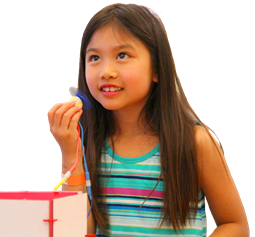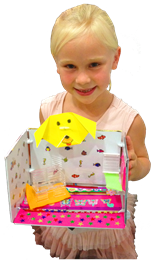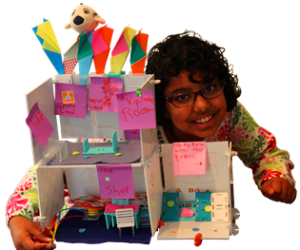Who would have thought that the US Dept. of Agriculture would be awarding the Memphis Zoo $500,000.00 for a project to connect rural schools online for a NanoZoo? Kudos to Dr. Helen Beady, Director of Education, and the staff at the Memphis Zoo for a truly imaginative approach to science education. From the March 9, 2011 news release,
Dr. Helen Beady, Memphis Zoo Director of Education, applied for this grant [Distance Learning and Telemedicine Grant Program] to help fund the Education Department’s ventures in nanotechnology through a program called “NanoZoo Connects.” This program will initially reach 14 schools in rural Tennessee through distance learning technology.
The Memphis Zoo’s “Discovery Center” will be renovated to become a state-of-the-art studio in which Zoo educators will be able to communicate through a video-bridge with some 7000 students in rural classrooms.
“This is just the beginning,” said Dr. Beady. “This grant will give us the ability to begin a program that will be improved and expanded for years to come. We can’t wait to see what the future holds for distance learning through this new technology.”
It was a story about a lotus leaf at a conference presentation that fired Helen Beady’s imagination three years ago. Scientists working at the nanoscale talk a lot about biomimcry. The lotus leaf is an excellent example of a material that is naturally water-resistant and finding out how the leaf achieves its water-resistant state and using that knowledge to create new textiles is an example of biomimicry.
The notion of biomimicry that helped Dr. Beady to tie together her interest in nanotechnology with exciting children’s interest in the zoo and the animals and integrating STEM (science, technology, engineering, and mathematics) education objectives in a single programme, NanoZoo. That project designed for students from kindergarten to high school was launched in August 2010. From the news release,
The concept of nanotechnology as it is taught through “NanoZoo” explores the ways animals and plants can help science improve the way we live and work. For example, students are taught how the Lotus leaf has inspired the development of fabrics that can remain under water for days and not get wet, and how the stick-ability of a Gecko’s foot has motivated the production of tape that allows a robot to walk vertically up a wall.
This new project which is being funded through the Dept. of Agriculture is the NanoZoo Connects distance education project. From the news release,
“NanoZoo and distance learning bring the Memphis Zoo on the cutting edge of technology,” said Zoo President and CEO, Chuck Brady. “What we learn in the early stages of these initiatives will revolutionize the way we are able to help educate students in Tennessee and, one day, across the globe.
The $500,000. will purchase equipment necessary to make the distance education experience successful. (If you’ve ever struggled with connections and bug-ridden software while trying to pursuing any kind of distance education programme, you can appreciate how important good equipment and software are.) From the news release,
The Memphis Zoo’s “Discovery Center” will be renovated to become a state-of-the-art studio in which Zoo educators will be able to communicate through a video-bridge with some 7000 students in rural classrooms.
What’s striking in this project is the multidisciplinary approach from inception to execution with all of it grounded in the zoo’s basic mission statement: “The Memphis Zoo preserves wildlife through education, conservation and research.” I’ll restate this to say, it’s about discovering and healing the relationship between people, animals, and nature. So by that token, teaching and discussing biomimicry and nanotechnology are not such a far reach as some may believe.
Here’s one last item to illustrate the point. I asked Tiffany Langston, a member of the Memphis Zoo’s marketing and communications department, for something either she or the children have found particularly interesting in the NanoZoo. Tiffany informed me that the Memphis Zoo is one of only four in the US that have pandas and the only food they will eat is bamboo (40 lbs. per day!). Students at the NanoZoo find out that the fibre within the bamboo stalks features a hexagonal structure at the nanoscale which makes the fibre (at the nanoscale) stronger than steel. Today, scientists are trying to mimic those structures to create strong materials that are produced in a more environmentally friendly fashion than steel.
Meanwhile, Dr. Beady has more projects up her sleeve (from the news release),
The Zoo’s Education Department has recently received a $25,000 environmental grant from the City of Memphis Office of Youth Services and Community Affairs to develop a Science, Technology, Engineering and Math (STEM) field program that focuses on the emerging science nanotechnology. This program will help inner city students draw connections between technology, plants, animals and those things that exist in the “big” world through our “NanoZoo.”
The NanoZoo initiative was celebrated at the Memphis Zoo’s Nano Days event on March 28, 2011 (from the news release),
On March 28, 2011 from 9:00 a.m. until 1:00 p.m. the Memphis Zoo invites you to join us for NanoDays and our One Bazillion Nano Meter Walk (leisurely 1 mile stroll). This event will include hands-on demonstrations which explore how scientists mimic traits of plants and animals to inspire innovations in technology and engineering.
The event attracted US Senator Steve Cohen who had this to say in a recent news release to the Memphis Business Journal (http://www.bizjournals.com/memphis/news/2011/03/28/memphis-zoo-gets-500000-nano-grant.html),
The initiative, NanoZoo Connects!, will help demonstrate how scientists use nanotechnology to mimic particular traits of animals and plants to solve engineering and technological problems, according to a release issued by U.S. Sen. Steve Cohen’s office.
“If we are going to successfully compete in a rapidly changing 21st century global economy, our children must have the necessary tools to get ahead,” Cohen said. “The NanoZoo Connects! program will help us accomplish such a goal.”
Dr. Helen Beady told me that she drew on her experience as a former business owner, where she was in the position of trying to hire people who didn’t have the necessary skills or education, to develop the NanoZoo programme. Multidisciplinary in nature. Dr. Beady has hired an engineer and a PhD. in biochemistry to assist with further developing the NanoZoo.
All of this may or may not lead to ‘successful competition in the 21st century global economy’ but it certainly will lead to children learning more about animals and nature and how we might all better co-exist on this planet.



